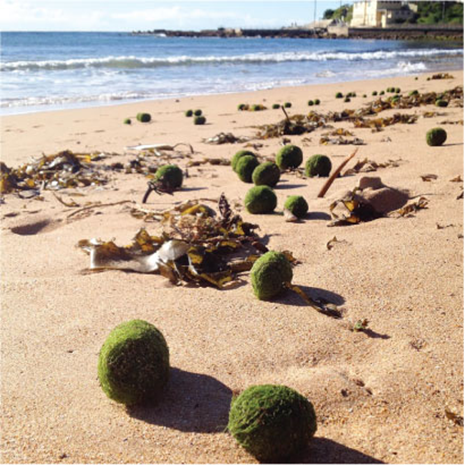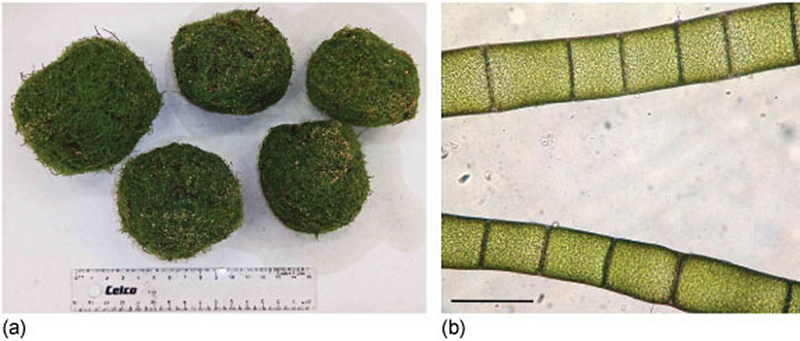Unraveling the Mystery of Sydney's Green Beach Orbs
Written on
The Enigma of Dee Why Beach
In September 2014, a curious event unfolded at Dee Why Beach in Sydney as unusual green, squishy orbs began to wash ashore. These peculiar formations, which captivated both locals and scientists, were quickly dubbed “alien eggs” by the media. One local shared their experience with MailOnline, stating, “I picked one up and squeezed it; it was so squishy – but I wasn’t sure if it was alive and worried I might hurt anything inside.” This sudden emergence raised pressing inquiries: What exactly were these objects? What led to this bizarre occurrence? The investigation revealed that the answers lie within the delicate balance of marine ecosystems and the effects of environmental changes.

Identifying the Culprit: Chaetomorpha Linum
Dr. Julia Cooke, an ecologist at Macquarie University, spearheaded the initial research into these enigmatic green orbs. She identified them as dense clusters of the algae Chaetomorpha linum. This species, characterized by its long, single-cell-wide filaments, was confirmed through both morphological examination and DNA testing. The findings suggested that a combination of warmer temperatures and nutrient runoff from nearby urban areas had elevated nutrient levels in Dee Why Lagoon, the intermittently closed and open lake located behind the beach. Over time, this lagoon had fostered the growth of algal mats.
The formation of the orbs likely occurred when the lagoon's mouth opened, allowing tides to circulate. The ensuing tidal movement, possibly enhanced by wave energy, would have fragmented these mats into spherical shapes.
Investigating Further: Data from 2017
In November 2017, the green balls reappeared, providing a unique chance to validate earlier hypotheses. Researchers collected extensive data again, focusing on weather trends, rainfall, and water levels in Dee Why Lagoon to assess the conditions that led to the formation of these algal spheres. The findings enabled a comparison between the environmental scenarios of 2014 and 2017, yielding significant insights into the factors behind this phenomenon.

The 2014 data indicated that maximum daily temperatures in the month leading to the event varied from 16 to 19 °C, slightly below the historical averages of 18–22 °C. In contrast, during the 2017 incident, temperatures soared between 16°C and 35°C, surpassing both the earlier figures and long-term averages. This notable rise in temperature likely accelerated algal growth within the lagoon.
Rainfall data from the nearby Curl Curl area showed significant rainfall events in both years, likely contributing to nutrient runoff from urban regions into the lagoon. This influx, combined with elevated temperatures, created optimal conditions for the rapid proliferation of Chaetomorpha linum, culminating in the formation of extensive algal mats.
Water Levels and Tidal Dynamics
Data from the Manly Hydraulics Laboratory revealed fluctuating water levels in Dee Why Lagoon leading up to both the 2014 and 2017 events. The lagoon's mouth, which had been closed for some time, eventually opened due to combined rainfall and tidal forces. This enabled substantial tidal movement, which likely played a critical role in breaking apart the algal mats and shaping them into spheres.
An analysis of wave direction conducted by oceanographers Prof. Ian Goodwin and Dr. Thomas Mortlock indicated that the swell preceding the appearance of the balls in 2014 was strong enough to carry them from the lagoon mouth to the beach. Similar wave patterns were noted in 2017, reinforcing the idea that tidal and wave actions were consistent contributors to the formation and beaching of these algal spheres.
The Impact of Climate Change
The recurrent environmental conditions observed in both 2014 and 2017 — elevated temperatures, substantial rainfall, and variable water levels — lend strong support to the hypothesis that these factors play a crucial role in the emergence of algal balls. Nutrient runoff from surrounding urban areas has heightened nutrient levels in Dee Why Lagoon, fostering the growth of Chaetomorpha linum. The subsequent tidal movements and wave action then reshaped these algal mats into the distinctive spheres that eventually reached the shore.
Yet, the lagoon has existed for centuries — why did this phenomenon manifest only in 2014 and reoccur three years later? As climate change amplifies the frequency and intensity of weather events, including heavy rainfall and extended warm periods, the conditions necessary for the formation of these algal balls are becoming increasingly prevalent. Ongoing urban development, which heightens nutrient runoff from impervious surfaces, may further exacerbate this issue.
The ramifications of climate change are significant in this context. Predictions of more frequent extreme weather events, such as intense rainfall and rising temperatures, suggest that the environmental conditions which led to the formation of algal balls at Dee Why Beach could become more common. This might result in similar occurrences in other coastal areas.
While the algal balls themselves may not pose a direct problem — aside from startling a few beachgoers — they represent a symptom of a changing planet, one increasingly influenced by human activity.
As urban areas expand and more land becomes impervious, nutrient runoff into adjacent water bodies is likely to rise. This nutrient loading can drastically modify the ecosystems of lakes, lagoons, and coastal waters, resulting in phenomena similar to what was observed at Dee Why Beach. Continuous monitoring and research are vital for predicting and mitigating these occurrences, allowing us to manage the ecological consequences of climate change and urban growth.
The mystery surrounding Sydney’s little green beach orbs may have been unraveled, but the lessons learned serve as a poignant reminder of the intricate relationships between climate, urbanization, and natural ecosystems. As we navigate the challenges posed by climate change, we must remain vigilant and intensify our efforts to reduce greenhouse gas emissions and nutrient pollution. The next challenge could be far more daunting and less whimsical.